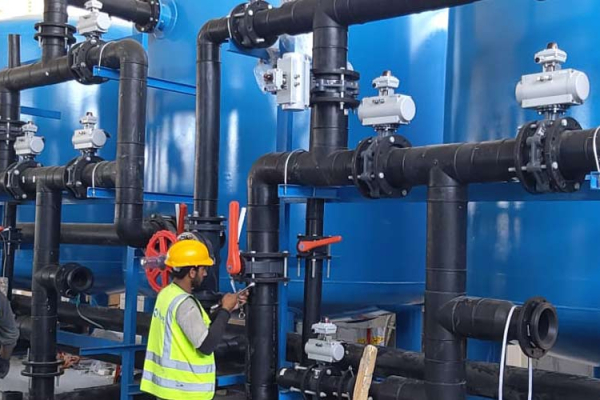
HDPE Pipeline Installation: Methods, Fittings, and Best Practices
HDPE (High-Density Polyethylene) pipes are among the most widely used piping solutions in the UAE for water supply, drainage, and industrial applications. Known for their durability, flexibility, and resistance to corrosion, HDPE pipes can last for decades with minimal maintenance. However, for a pipeline system to work effectively, the HDPE pipe fittings used must match the same quality and specifications as the pipes themselves.
Common Types of HDPE Pipe Fittings
Using the right fittings ensures a leak-proof, long-lasting pipeline. The most common types include:
- Couplers/Joiners – Connect two pipes of the same diameter in a straight line.
- Elbows – Available in 45° and 90° angles to change the direction of the pipeline.
- Tees – Create a branch connection in a T-shaped junction.
- Reducers – Join pipes of different diameters.
- End Caps – Seal the end of a pipeline to prevent leakage or contamination.
Methods for Connecting HDPE Pipe Fittings
Unlike metal pipes that often use welding or flanges, HDPE pipeline installation relies on specialized joining methods:
1. Butt Fusion
The ends of the pipe and fitting are heated until they melt, then pressed together to form a joint stronger than the pipe itself. This method is ideal for large-diameter HDPE pipes.
Required equipment: butt fusion machine, pipe cutter, and alignment tools.
2. Electrofusion
Electrofusion fittings contain built-in heating elements. When connected to an electrofusion machine, the elements melt and bond with the pipe, creating a precise and reliable seal. While slightly more expensive, electrofusion is preferred for critical applications.
3. Compression Fittings
Mechanical fittings that use pressure and rubber seals to form a watertight connection. Ideal for quick repairs, temporary installations, or situations where fusion equipment is unavailable.
4. Threaded Fittings
Screw-threaded connections used mainly to link HDPE pipes to other pipe materials or equipment. Convenient but not as strong as fusion joints.
Choosing the Right HDPE Pipe Fitting
Selecting the correct fitting is essential for safety and efficiency:
- Pressure Rating – Match the fitting’s rating to the pipe’s working pressure to avoid failures.
- Size Compatibility – Ensure fittings align with the exact diameter and wall thickness of your HDPE pipes.
- Application Needs –
- Potable water: food-grade fittings
- Chemical transport: chemical-resistant fittings
- Underground pipelines: extra-durable fittings
- Climate Considerations – In the UAE’s extreme heat, fittings must withstand thermal expansion and contraction without cracking.
HDPE Pipeline Installation Process in the UAE
Professional HDPE pipeline installation follows a structured approach:
- Planning and Preparation – Conducting a site survey, determining pipeline routes, and preparing all necessary materials.
- Trenching – Excavating to the correct depth and width while following UAE regulations. Proper bedding (often sand) is placed to protect the pipe from damage.
- Pipe Handling and Storage – HDPE pipes should be stored away from direct sunlight to avoid UV degradation and handled carefully to prevent scratches or dents.
- Joining Pipes – Using butt fusion or electrofusion for strong, leak-proof joints.
- Testing and Inspection – Pressure testing the system and inspecting alignment before commissioning.
- Specialized Services – In complex areas, trenchless methods like microtunneling can install pipelines without major surface disruption.
Why HDPE Pipes Are a Preferred Choice
- Durability – Resistant to corrosion, abrasion, and chemical attack.
- Flexibility – Easily installed in varied terrains and conditions.
- Longevity – Service life often exceeds 50 years, minimizing replacement costs.
Expert Services in the UAE
Specialized companies, such as Freeline UAE, provide complete solutions — from supply of HDPE pipe fittings to full HDPE pipeline installation, repair, and maintenance. Many also offer 24/7 emergency repairs for clients in Dubai, Abu Dhabi, Sharjah, and across the UAE.
With the right combination of high-quality HDPE pipes, proper fittings, and expert installation, you can ensure a reliable, efficient, and long-lasting pipeline system suited to the UAE’s demanding conditions.

